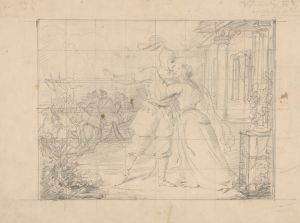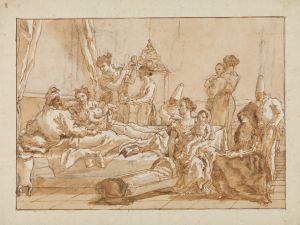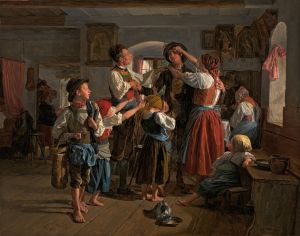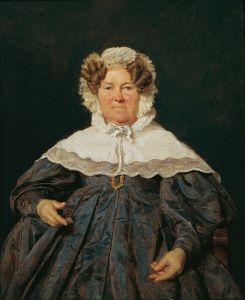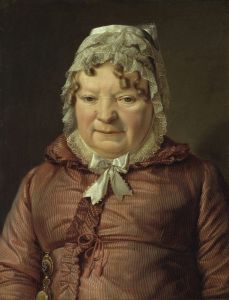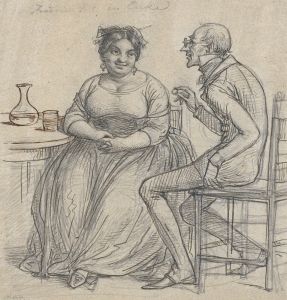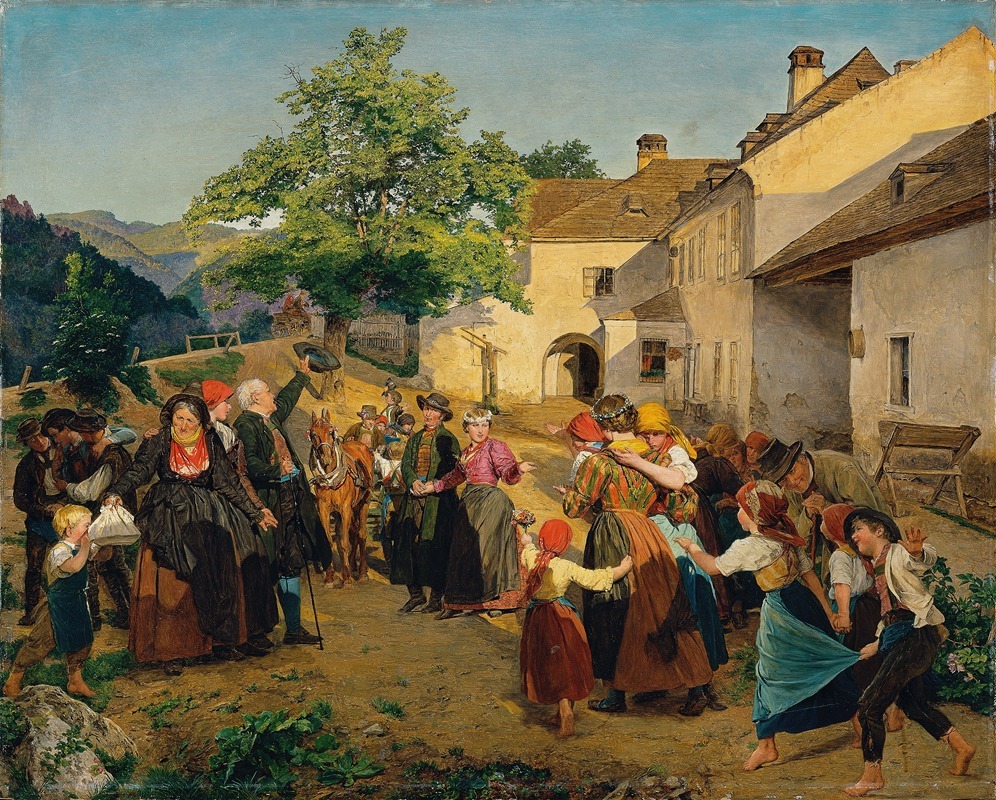
The farewell of the bride from her parents’ home
A hand-painted replica of Ferdinand Georg Waldmüller’s masterpiece The farewell of the bride from her parents’ home, meticulously crafted by professional artists to capture the true essence of the original. Each piece is created with museum-quality canvas and rare mineral pigments, carefully painted by experienced artists with delicate brushstrokes and rich, layered colors to perfectly recreate the texture of the original artwork. Unlike machine-printed reproductions, this hand-painted version brings the painting to life, infused with the artist’s emotions and skill in every stroke. Whether for personal collection or home decoration, it instantly elevates the artistic atmosphere of any space.
Ferdinand Georg Waldmüller was a prominent Austrian painter in the 19th century, renowned for his contributions to the Biedermeier period, which emphasized a return to simplicity and realism in art. One of his notable works is "The Farewell of the Bride from Her Parents’ Home." This painting exemplifies Waldmüller's skill in capturing the nuances of human emotion and the intricacies of domestic life, themes that were central to the Biedermeier style.
"The Farewell of the Bride from Her Parents’ Home" depicts a poignant moment of transition and emotion, as a bride prepares to leave her family home. Waldmüller was known for his ability to convey deep emotional narratives through his art, and this painting is no exception. The scene is set in a domestic interior, typical of the Biedermeier period, which often focused on the middle-class home and family life. The attention to detail in the furnishings and the clothing of the figures reflects Waldmüller's dedication to realism and his keen observational skills.
In the painting, the bride is the central figure, surrounded by her family members who are gathered to bid her farewell. Waldmüller’s use of light and shadow enhances the emotional depth of the scene, highlighting the bride's face and her expression of mixed emotions—joy for her new life and sadness for leaving her family. The family members exhibit a range of emotions, from the mother’s tearful farewell to the father’s stoic demeanor, each contributing to the narrative of familial bonds and the bittersweet nature of such occasions.
Waldmüller’s technique is characterized by meticulous attention to detail and a vibrant color palette, which brings the scene to life. The textures of the fabrics, the intricate patterns of the wallpaper, and the delicate play of light across the room are rendered with precision, showcasing Waldmüller’s mastery of the medium. His ability to capture the subtleties of light and color not only adds realism to the painting but also enhances its emotional impact.
This work is a testament to Waldmüller’s ability to blend realism with emotional depth, a hallmark of his artistic style. It reflects the cultural and social values of the time, emphasizing the importance of family and tradition. The painting also serves as a historical document, providing insight into the customs and domestic environments of 19th-century Austria.
Waldmüller’s influence extended beyond his own time, as he played a significant role in the development of Austrian art. His works, including "The Farewell of the Bride from Her Parents’ Home," continue to be celebrated for their technical excellence and emotional resonance. They offer a window into the past, capturing the essence of a bygone era with sensitivity and precision.
Overall, "The Farewell of the Bride from Her Parents’ Home" is a quintessential example of Waldmüller’s artistry, combining technical skill with a profound understanding of human emotion. It remains an important piece within the canon of 19th-century European art, reflecting both the personal and cultural narratives of its time.





